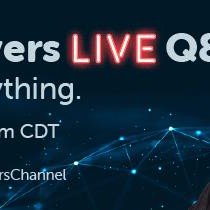

Big 2-Yr Anniversary of Mike Meyers Live from Houston: Wednesday 3/30 Q & A !
Can’t believe its been 2 years. Join Mike this Wednesday 3/30 at 2 PM Central Standard Time. Total Seminars live Q & A YouTube session with bestselling CompTIA author Mike Meyers. We’re celebrating with some Great Prizes. It’s entirely free and you’ll finally get the answers to your burning IT questions!
You can literally Ask Mike Anything!
This Wednesday, March 30, marks the second anniversary of the Mike Meyers live AMA shows and he’s celebrating like crazy! Every Monday and Wednesday, Mike hosts an hour of answering live questions on just about any technical topic focusing on helping people prepare for CompTIA exams. During his show, he holds contests to win free access to TotalTester Online (TTO) practice tests and to win a CompTIA exam voucher.
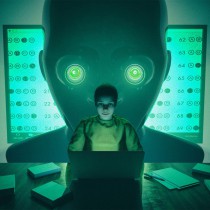

Don’t Be Scared to Test at Home This Halloween!
Does the thought of taking your test at home send shivers up your spine? Are you scared that you will fail because you won’t be ready? Does the idea of having someone watch you make you feel like you’re in a bad 1980s video sung by Rockwell and Michael Jackson?
It’s OK to get a little nervous before plunging into the unfamiliar. This may be not only your first time taking a CompTIA exam, but also your first time testing from home! Luckily, you’re not alone in having those feelings as this is a new process for most of us.
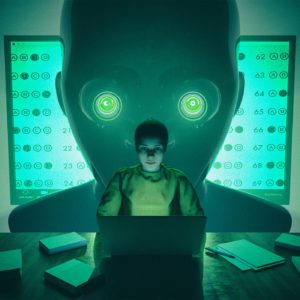
Not a proctor, just the world’s creepiest shoulder surfer.
I Ain’t Afraid of No Ghosts
We’ll help you overcome your fears by helping you prepare. Fortunately, many others before you have already done it successfully. After all, CompTIA allowed testing from home on April 15. Other vendors like Certiport and Cisco, among others, have done the same.
By the way, if you want to check out those other certifications or get some more last-minute practice, then check out our materials here:
Total Seminars on Certifications
- TotalVideo video-based training courses
- TotalSims performance-based question prep
- TotalTester practice tests
Ready to test?
Click here to get CompTIA Discount Exam Vouchers
Test at Your Favorite Haunt
With a strong Internet connection, a computer that meets the requirements, the right ID materials, and no prohibited materials or distractions in the room, then you can test safely from home. Also, make sure that you plugged your computer into a reliable power source and aren’t relying on the battery.
Good news! You don’t even have to test at home; you can test from work, or also a public library! You can’t take the test from a tablet or mobile phone at this time.

What happens when you keep putting off scheduling the test.
Bad Things Come in Threes … Unless You Prepare!
First, you should check if your computer would work under exam conditions. Take the official system test to see how well it would perform on the day of the test:
Assuming that you pass, then your next biggest concern will involve having a high bandwidth because you will use streaming video and audio for the entire two hour test. You should try a speed test.
Ideally a wired connection works best. If you have only a wireless connection, then ensure that others in your area turned off their connections temporarily. Better yet, have them leave during test time. Yes, Big Brother is watching you, so give him a gift card for a coffee, send him trick or treating somewhere, or give him a book to read.
Now that you know you have the proper equipment, you need to get familiar with the test format. Unfortunately, because you cannot use notes on paper or electronic devices to remember things, draw diagrams, summon spells, or perform calculations, you’ll use a sheet on the screen for your notes. We really, REALLY recommend that you practice using this feature before so that you don’t waste precious time learning how it works during the test itself:
https://home.pearsonvue.com/onvue/whiteboard
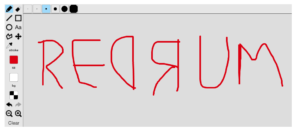
My proctor quit after I tested for some reason.
Now, if you do these three things, you’re pretty much ready to test at home by this point. But you should also know what to do for the test itself.
Don’t Ghost Your Test at Home!
Just as with any standard test center, you should arrive 30 minutes early. The check in process takes 15 minutes. If you’re scheduled at 1 PM, then get online and be ready by 12:30 PM.

Screams and tears won’t make you any less late. Arrive early to avoid upsets! No exceptions!
The proctor will explain the dos and don’ts. You will provide an ID copy, just like at a testing center, but good idea to bring two in case one doesn’t count.
The proctor will validate your ID with the Web camera and explain the rules. This means that you will need to make sure that your camera, microphone, and speakers work.
Just Because You’re Paranoid Doesn’t Mean They’re Not Watching You
The camera must be positioned so that the proctor can see you, the screen, and keyboard. Software will record your test screen even if you somehow block the Web camera with your hand, so you can’t “accidentally” block the screen. Trust us, we thought about it and they beat us to it already.
You cannot wear any phones, headphones, headsets, electronic devices, pagers (if you’re in a 1980s costume I guess), watches, wallets, purses, hats, head coverings, bags, coats, books, notepads, pocket protectors, or anything else not approved. Clothes are optional but we highly recommend them.

Wait, so we’re supposed to be afraid of her for not wearing a mask? Clown world indeed. Go, 2020!
I Can See Your House From Here…
The proctor will also make you pick up the Web camera and do a 360 view of the entire room. Therefore, you must remove all electronic devices, audio devices, notes, cards, books, scrawls on the wall/ceiling, floor, and any people who could possibly give hints, tips or cheats.
You can’t have notes, books, papers, pens, pencils, monitors or computers (or at least they must be turned off and unplugged), whiteboards, blackboards, Ouija boards, bloody messages scrawled on the wall, etc.

Are you moving it or did the mouse run out of battery and stop syncing again?
You won’t pass if you fail this preview of the room. The camera also will help the proctor to see if you’re checking your pockets, looking at the floor, or glancing around during the test looking at things that can help you during the test. Basically, you must look at the screen only.

Sure it’s disturbing, but at least they can’t accuse you of cheating on the test!
Don’t Rely on Phantom Power
You will also need to enable your microphone. That system test that you did earlier should check the microphone component. CompTIA doesn’t want someone to record the questions with hidden microphone, therefore you cannot talk to yourself during the test. Besides, it’s kind of weird. Psychic communication with spirits is technically not prohibited, but since they’d probably only know old versions of the test anyway any ghosts in the machine won’t help you very much.
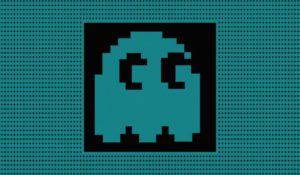
We prefer the term living impaired, thank you.
CompTIA Will Soon Mean for Computer TestIng At Home (The H is Silent)
That’s pretty much it! You can now take the test and with our help you’ll know all the content so that you can pass the exams with ease. Once you’re done, the test will ask demographic and basic questions – just like they do at the test site examinations – and THEN it will give you your results. You will get a hard copy in the mail and you can get a digital copy on the spot.
We hope that you have a safe and Happy Halloween and that you succeed on your exams! Now go study, register, and test, then let us know how it goes!
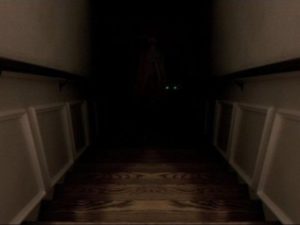
Uh, you go first. I’ll be right behind you.
Scott Jernigan’s on YouTube Fire!
Hey readers,
If you haven’t checked out Scott’s A+ and Network+ videos, do yourselves a favor and check them out at our YouTube channel. Here are three of my favorites:
New CompTIA Exam Prices
CompTIA has raised the prices for their exams effective January 1, 2014.
You can save money by purchasing discount exam vouchers from Total Seminars. Visit http://www.totalsem.com/exam-vouchers/ to buy your vouchers and save.
Effective January 1, 2014 the new CompTIA exam prices have increased as follows:
CompTIA A+ Certification – The prices for both the CompTIA A+ 220-801 and CompTIA A+ 220-802 exams have been raised from $183.00 to $188.00.
CompTIA Network+ Certification – The price for the CompTIA Network+ Certification exam has been raised from $261.00 to $269.00.
CompTIA Security+ Certification – The price for the CompTIA Security+ Certification exam has been raised from $284.00 to $293.00.
You can always save money by buying discount vouchers from Total Seminars but we are holding our discount prices based on the old CompTIA exam prices for a few days. Get your vouchers now before we have to raise the prices to reflect the new CompTIA prices.
What Makes the Network+ Different from Other CompTIA Exams?
[Posted 26 September 2013 by Kathy Yale]
As the title suggests the Network+ certificate deals with establishing and administering various types of computer networks. The certification test is maintained by CompTIA. This is a non-profit organization, established in 1982, that represents multiple computer-related businesses. The name is a partial acronym for Computing Technology Industry Association. Because of the different companies involved, the Network+ test, like others they provide, is not focused on the hardware or software of any particular business.
The Network+, along with the A+ and Security+ certificates, is viewed as one of the most respectable certificates for advancing a person’s career in information technology. These three certificates have received accrediting by ANSI. CompTIA also provides other certifications for separate specialties of the industry. The Network+ certificate, like all the others, has some unavoidable overlap in subject matter with these other tests. For example, the A+ certificate requires basic knowledge of networking as it relates to desktops, laptops, and mobile devices. However, the Network+ test also deals with security that pertains to network administration.
How Network+ is Different
All CompTIA tests, including the Network+ test, have the same basic structure as there is a combination of written and hands-on questions. However, the Network+ test is designed to gauge an individual’s knowledge of networking skills like assembling, overseeing, and correcting problems in either a local area or wide area network. These topics are more extensive than the network-related questions in the A+ test. In fact, while there is no required prerequisite for the Network+ test, the A+ certificate is recommended. The A+ certificate just touches on the very basics of networking. This would include linking a desktop computer to the internet or tying the desktop together with peripheral equipment.
The actual physical layout and operation of networks is the prime focus of the Network+ certificate. There are two basic categories: the local area network often referred to as a LAN, which is limited to a home, business, or facility, and the wide area network, or WAN, which covers more space and can span nations or continents. Someone pursuing this document would need to understand how to set-up any of the primary configurations for LANs. These would include the ring, bus, star, and tree pattern, among others.
In addition, the candidate would need to know the various means of linking the components together, such as ethernet, fiber optics, or wireless transmissions. They also need to be able to determine which of these arrangements is best for a particular situation. This goes beyond the basics covered by the A+ test. The test also covers knowledge of establishing WANs and connecting them, along with LANs, to the existing internet. Network administrator, network technician, and network troubleshooter are some of the job titles of careers this document prepares test-takers for.
Other topics covered by the Network+ test include network security, servers, storage, and network operating systems. These areas overlap with other certificates. The Security+ test deals specifically with protecting a network from hackers and other threats. There is a Server+ and Storage+ certificate that handles the details of each of these components. There is also a Linux+ certificate that covers this open-source operating system commonly used on servers. Since information technology involves all these fields, it’s useful for someone wanting to move up to obtain multiple certificates related to the specialty they’re interested in. One of the most essential of these certificates is the Network+.

